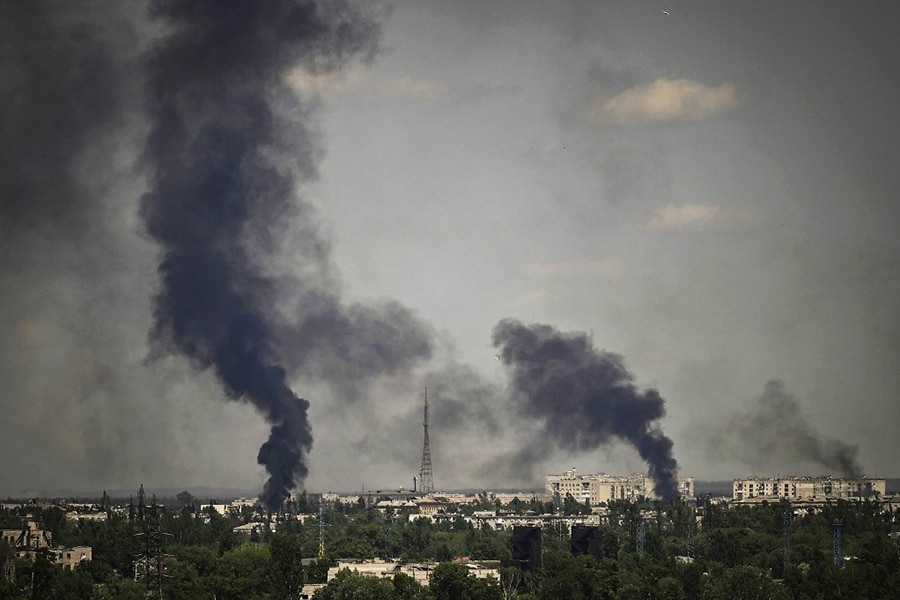
100 days of war in Ukraine: A timeline
As Russia extends its grip over the east, we look back on 100 days of fighting that has killed tens of thousands of civilians and reduced entire cities to rubble
 Smoke rises in the city of Severodonetsk during heavy fightings between Ukrainian and Russian troops at eastern Ukrainian region of Donbas on May 30, 2022, on the 96th day of the Russian invasion of Ukraine. EU leaders will try to overcome Hungary's rejection of a Russian oil embargo on May 30, 2022 as part of a further tightening of sanctions against Moscow, whose forces are advancing in eastern Ukraine, with fighting in the heart of the key city of Severodonetsk. (Credits: ARIS MESSINIS / AFP)
Smoke rises in the city of Severodonetsk during heavy fightings between Ukrainian and Russian troops at eastern Ukrainian region of Donbas on May 30, 2022, on the 96th day of the Russian invasion of Ukraine. EU leaders will try to overcome Hungary's rejection of a Russian oil embargo on May 30, 2022 as part of a further tightening of sanctions against Moscow, whose forces are advancing in eastern Ukraine, with fighting in the heart of the key city of Severodonetsk. (Credits: ARIS MESSINIS / AFP)
Russia invaded Ukraine in the early hours of February 24, setting off the worst conflict in Europe in decades.
As Russia extends its grip over the east, we look back on 100 days of fighting that has killed tens of thousands of civilians and reduced entire cities to rubble.
February 24: Russia invades
Russian President Vladimir Putin announces a "special military operation" to "demilitarise" and "de-Nazify" the former Soviet state and protect Russian speakers there.
A full-scale invasion starts with air and missile strikes on several cities. Ukrainian President Volodymyr Zelensky pledges to stay in Kyiv to lead the resistance.







